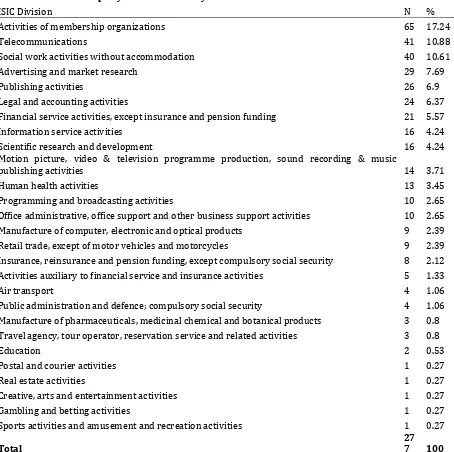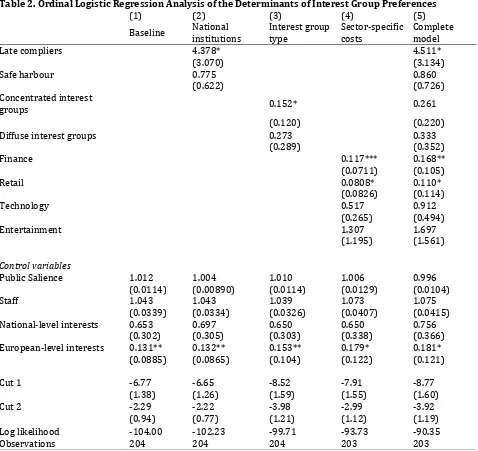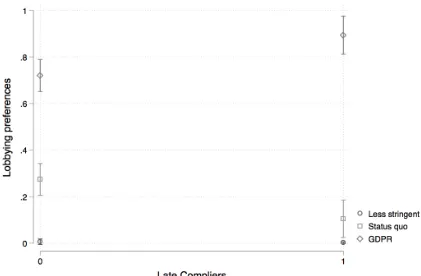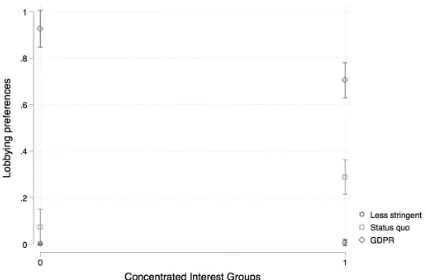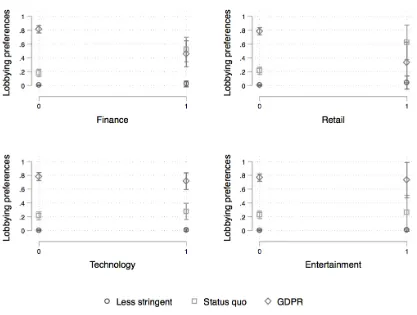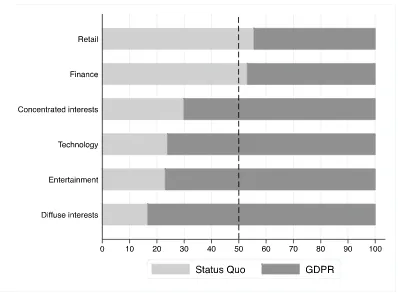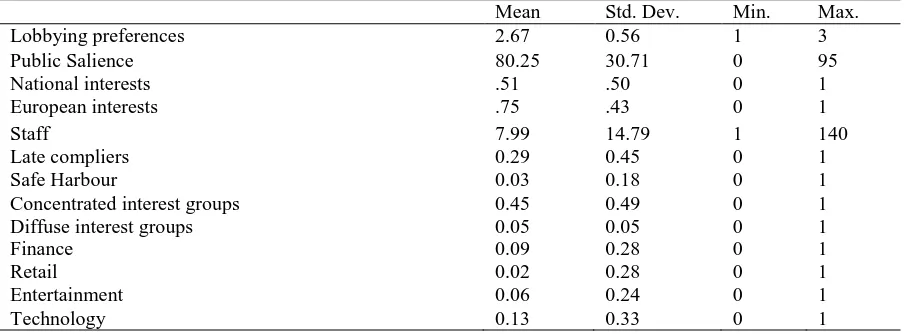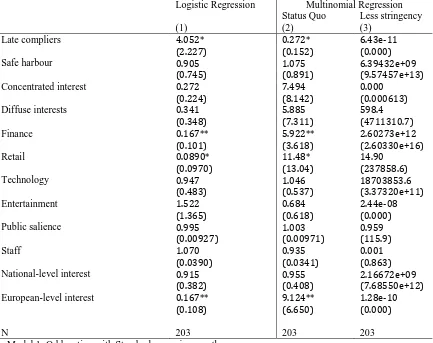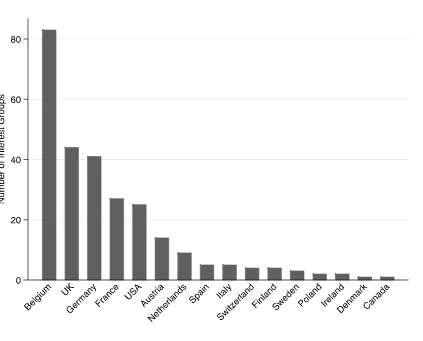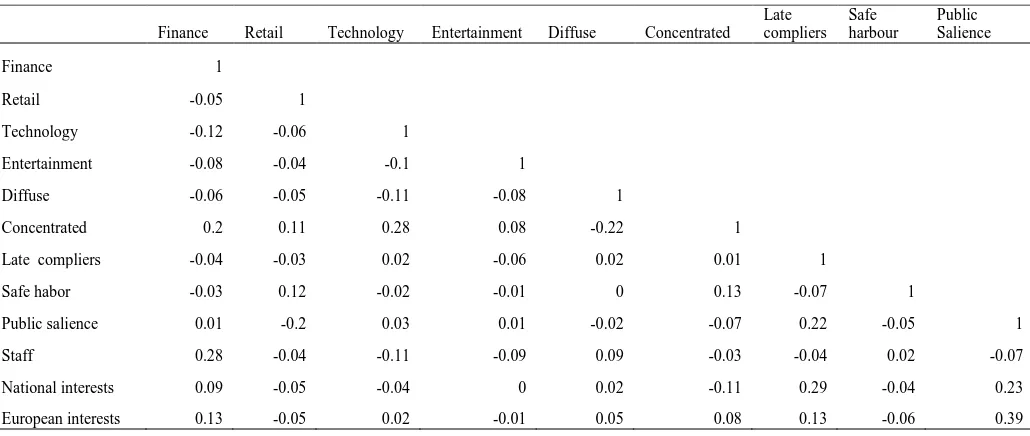Manuscript version: Author’s Accepted Manuscript
The version presented in WRAP is the author’s accepted manuscript and may differ from the published version or Version of Record.
Persistent WRAP URL:
http://wrap.warwick.ac.uk/103444
How to cite:
Please refer to published version for the most recent bibliographic citation information. If a published version is known of, the repository item page linked to above, will contain details on accessing it.
Copyright and reuse:
The Warwick Research Archive Portal (WRAP) makes this work by researchers of the University of Warwick available open access under the following conditions.
Copyright © and all moral rights to the version of the paper presented here belong to the individual author(s) and/or other copyright owners. To the extent reasonable and
practicable the material made available in WRAP has been checked for eligibility before being made available.
Copies of full items can be used for personal research or study, educational, or not-for-profit purposes without prior permission or charge. Provided that the authors, title and full
bibliographic details are credited, a hyperlink and/or URL is given for the original metadata page and the content is not changed in any way.
Publisher’s statement:
Please refer to the repository item page, publisher’s statement section, for further information.
Choosing Lobbying Sides:
The General Data Protection Regulation of the EU
Ece Özlem Atikcan, Ph.D. & Adam William Chalmers, Ph.D.1
Ece Özlem Atikcan is an Assistant Professor at the University of Warwick, Department of Politics and International Studies.
Adam William Chalmers is a Lecturer of European Political Economy at King’s College London, Department of European and International Studies.
Contact Details
Department of Politics and International Studies Social Sciences Building, University of Warwick Coventry CV4 7AL
United Kingdom
Department of European & International Studies King's College London
Virginia Woolf Building, 22 Kingsway London WC2B 6LE
Email:
o.atikcan@warwick.ac.uk adam.chalmers@kcl.ac.uk
Abstract
Despite the impressive amount of empirical research on lobbying, a fundamental question remains overlooked. How do interest groups choose to lobby different sides of an issue? We argue that how groups choose sides is a function of firm-level economic activity. By studying a highly salient regulatory issue, the EU’s General Data Protection Regulation, and using a novel dataset of lobbying, we reveal that a group’s main economic sector matters most. Firms operating in finance and retail face unique costs and are incentivized to lobby against the GDPR. However, these groups are outgunned by a large, heterogeneous group of firms with superior lobbying firepower on the other side of the issue.
Key words
Data protection, European Union, financial industry groups, interest groups, lobbying
Acknowledgements
An earlier version of this article was presented at the 2015 ECPR conference in Montreal, the 2015 APSA conference in San Francisco, and the 2016 SGEU conference in Trento, Italy. We would like to thank discussants and panel participants at all three conferences for their helpful suggestions.
A central concern of interest group scholars is the question of how interest groups align on
different sides of a lobbying battle. Specifically, are interest group mobilization patterns skewed
or biased toward one set of interests and not another? This question, while relevant in various
lobbying systems,i is particularly salient in the case of the European Union (EU). EU interest
group scholars have long characterized the EU lobbying system in terms of elite pluralism,
where business interests are systematically advantaged over citizen groups and NGOs (Mazey
and Richardson 1997; Streeck and Schmittter 1991; for a competing view see Eising 2007).
Indeed, empirical surveys of the EU interest group population consistently show how business
interests are better represented in Brussels than their not-for-profit counterparts (Berkhout et
al. 2015; Berkhout and Lowery 2008; Broscheid and Coen 2007; Messer, Berkhout, and Lowery
2010; Rasmussen and Carroll 2014; Wonka et al. 2010). Rather than being fair and equal, ‘one of
the most consistent findings in interest group research’ is that interests are rarely, if ever,
aligned evenly on different sides of an issue and that lobbying patterns in the EU tend to be
highly skewed (Berkhout et al. 2015, 12).
The issue of skewed alignment has given rise to an impressive amount of empirical
research. Scholars take up the fundamental task of mapping out the EU lobbying footprint by
attempting to establish the population of interest groups active in Brussels (Berkhout and
Lowery 2008; Greenwood 1997; Kohler-Koch 1997; Wonka et al. 2010). Others, assessing a host
of structural and actor-level variables, examine when and why interest groups mobilize as well
as how ‘diverse’ (i.e., how many different types of groups mobilize) this set of actors tends to be
(Berkhout and Lowery 2008; Broscheid and Coen 2007; Chalmers 2015; Messer, Berkhout, and
Lowery 2010; Rasmussen and Carroll 2014). Scholars have also linked alignment patterns to
interest group success in lobbying, showing how success is a function of the aggregate resources
(e.g., finances, personnel, information, and expertise) of interest groups aligned on competing
sides of an issue (Baumgartner et al. 2009; Klüver 2013). Finally, a recent contribution by a
perspective of what an ‘unbiased’ lobbying system would look like in an ideal interest group
system (Lowery et al. 2015).
There is thus no paucity of research on the question of alignment. The existing
scholarship is impressive and has led to some cumulative findings about the EU lobbying
system. Nevertheless, we argue that one fundamental question still tends to be overlooked.
Specifically, what factors determine lobbying sides in the first place? Where scholars have
sought to map out and explain mobilization patterns, they have occluded the alignment of
groups on different sides of an issue. And where scholars have painstakingly coded group
alignment on different sides of an issue, these data are used as independent variables explaining
some other phenomenon (e.g., group success). The main contribution of this analysis is that we
take alignment patterns (understood in terms of lobbying sides, or how groups align either in
support of a policy or in opposition to it) as our dependent variable. Our central goal is to
discern the factors that explain alignment patterns assessed at the level of the individual
interest group and examined with regard to a specific EU policy proposal.
The one study, to our knowledge, that does take alignment patterns as a dependent
variable, Bunea (2015), explains alignment in terms of formal coordination amongst interest
groups via their membership in national and European associations. While presenting a
compelling argument, one shortcoming of this study, and something that we seek to address
here, is its perfunctory treatment of factors explaining alignment that are unrelated to explicit
coordination. This includes how alignment results from interest groups sharing similarities in
terms of group organization structure or type. While these factors are included as part of our
analysis, we advance on Bunea (2015) by explaining interest group alignment not only in terms
of what groups are (e.g., group type) but also in terms of what groups do (e.g., their activity
across different economic sectors). Importantly, and as we discuss in greater detail below, we
find that what interest groups do tends to matter considerably more than what groups are.
Our analysis of alignment begins with the observation that policy context matters. Each
strategies, the extent of group influence, and more importantly patterns of interest group
alignment (Klüver, Braun, and Beyers 2015).ii To hold the policy context constant we have opted
to narrow the empirical focus of this analysis to lobbying on one specific, highly salient, and
recent EU regulatory issue: namely, the proposed General Data Protection Regulation (GDPR).
Aimed at shoring up critical weaknesses in the existing 1995 Data Protection Directive – like
suspending the current EU-U.S. Safe Harbour Agreement that allows American companies to
handle European citizens’ data without using the EU’s stringent data protection rules – the
proposed regulation ‘has been one of the most lobbied pieces of European legislation in
European Union history’ (Long, 2014: 1).iii Indeed, there is widespread conjecture that the GDPR
has been subject to excessive and undue lobbying pressure levelled at weakening the new
regulation and, in particular, shaping it in the interests of a small number of very powerful
private-sector firms (see Anonymous, 2013, p. 180). A high profile scandal in 2012 is a case in
point: several Members of the European Parliament were caught ‘copying-and-pasting’ industry
policy requests directly into legislative amendments for the GDPR (for an overview see Clark,
2013). The scandal captured news headlines, and highlighted the lobbying power exerted by
U.S. Internet and retail giants, like Amazon and eBay.
This article seeks to explain interest groups’ preference alignment for the GDPR, either
lobbying for or against it. Our main argument is that interest group preference alignment is a
function of industry-specific costs related to regulatory change. Generally speaking, there is a
surprising paucity of research seeking to explain interest group preferences. (Newman 2010,
1289). The work that does exist tends to focus on national institutional contexts (where groups
operate) and interest groups’ permanent characteristics, whether business associations or
NGOs (what groups are). While presenting a compelling picture, we argue that these
explanations only take us so far in understanding how groups align on different sides of a
lobbying battle, expressing support or opposition for some new proposal. In addition to ‘where
groups operate’ and ‘what groups are’, we argue that preferences are a function of ‘what groups
immediate costs that regulatory change imposes on a specific industry. Industries that
anticipate immediate cost increases will lobby to oppose change or will lobby in favour of
retaining the status quo, while industries that anticipate costs decreases or no increases will
lobby to support change. Our argument, while straightforward, marks an important advance on
existing work. First, we suggest that industry costs are not country specific, but rather have a
transnational character. While country institutions may moderate preferences, industry actors
express preferences that are not circumscribed by state boundaries. Second, explanations that
rely on permanent interest group characteristics to explain group preferences, making a key
distinction between business and NGOs, occlude important intra-business differences. Our
explanation takes these differences seriously, focusing on the different ‘costs’ that specific
industries face in light of regulatory change.
The basis of our analysis is a novel dataset derived from interest group lobbying on the
European Commission’s GDPR consultations. This consists of lobbying positions taken by 279
individual interest groups on three separate GDPR consultations over a three-year period
(2009-2011). Statistical analyses reveal several key findings. We find some evidence that
preference alignment is a function of industry specific costs. In particular, groups representing
the interests of the financial and retail sectors are much more likely to wage a trenchant defence
of the status quo than other sectors. Both sectors routinely handle vast amounts of sensitive
personal data, are the primary targets of cybercrime and data breaches, and also stand to face
high fines for failing to comply with the new EU rules. As such, groups representing finance and
retail are highly incentivized to lobby against the GDPR. Nevertheless, we also find these effects
are not consistent across other sectors that are susceptible to such fines. Instead, lobbying in
support of the GDPR is far more widespread and involves a large, heterogeneous group of
interests. In other words, when it comes to choosing sides, in this case lobbying is highly
skewed toward support for the GDPR. These conditions, we argue, are conducive to substantial
policy change and help explain why the defence of the status quo, commonly a strong position
Explaining patterns of support and opposition for the GDPR
The EU has long acted as a global standard setter for Internet privacy and data protection. Its
1995 Data Protection Directive enshrined in law the individual’s right to control the collection,
dissemination, and storage of personal information. Perhaps most innovative, the Directive,
through its ‘extraterritorial clause’, applies equally to personal data disseminated across EU
member state borders as well as data shared with third party countries. Indeed, the Directive
has become the de facto international standard with more than 30 countries now following the
EU’s approach (De Hert et al., 2012: 131; Newman, 2008: 104). Since 2012, efforts to strengthen
the Directive and increase its scope and power have been underway. The proposed General
Data Protection Regulation (GDPR) increases legal harmonization across the EU’s member
states, strengthens monitoring and compliance mechanisms, closes legal loopholes that allow
for the existence of ‘data havens’, and even suspends the current EU-U.S. Safe Harbour
Agreement (Gyves, 2015; Voss, 2014). For Kuner (2012), the new Regulation marks nothing less
than a ‘Copernican revolution’ in EU data protection law.
The importance and scope of the GDPR for both EU member state and third countries
help explain intense lobbying efforts to shape the new Regulation. Nevertheless, despite
considerable conjecture about lobbying on the GDPR, there is as yet very little scholarly work
addressing this issue. The scant work that has been done can be categorised into two broad
explanations, one related to differences across countries and their existing institutions, and the
other related to differences among different types of interest groups.
First, scholars have long acknowledged that market integration in Europe creates new
sets of ‘winners’ and ‘losers’, both inside and outside of the Union. For EU members, the
Europeanization literature suggests that when there are changes at the European level, how
closely these changes fit with what already exists at the domestic level defines the member
state’s reaction to the new policy (Börzel et al., 2003; Ladrech, 2010; Risse et al., 2001). Poor fit
strong pressure, we would expect more interest group resistance and activism towards the
proposed measure. Adaptational pressures are also felt by non-EU member states. Powerful
states can seek to limit adjustment costs, ensuring that new (international) arrangements
correspond as closely as possible to their pre-existing national regulatory frameworks (see
Simmons 2001). More often, however, new EU standards often ‘forces global competitors […] to
meet similar requirements at home’ (Vogel, 2012: 8). Once again, pressure corresponds to the
gap between existing third-country domestic rules from EU rules.
In the particular area of data protection, the fit/misfit between EU and third country
rules has been used to explain the considerable resistance of the U.S. government and U.S.-based
firms toward the EU’s 1995 Directive. The Directive favoured a top-down, government-led
approach, while the U.S. drew on its longstanding tradition of self-regulation and limited
government involvement. While in Europe privacy is considered a fundamental right to be
protected by the state, the U.S. ‘prefers a more market-oriented approach to data protection’
(Bessette et al., 2001). These differences across the two systems translated into adjustment
costs that were unfavourable to U.S. firms. To adopt EU rules would have effectively imposed a
high ‘regulatory tax’ on companies accustomed to less stringent rules (Bessette et al., 2001: 71).
The resulting Safe Harbour compromise applied EU rules to U.S. firms but via a self-regulatory
approach. Since first being introduced in 1998, Safe Harbour has been the subject of much
criticism, with several studies revealing serious compliance issues of many U.S. firms handling
personal data but not meeting the EU’s minimum requirements (European Commission, 2002a,
2004; Rossi, 2014: 70f).
A second explanation for variation in interest group lobbying demands is related to
interest groups’ permanent characteristics. Most importantly, different types of interest group
are expected to have certain regulatory preferences based on the costs imposed by a new
regulation (Dur and Mateo 2016). A central distinction is made between so-called diffuse
interest groups (like cause groups and NGOs) and concentrated interest groups (like business
segments of society and lack a well-delineated constituency (Baroni et al. 2014, 145; Beyers
2002, 589, 2004, 216; Walker 1991), have ‘diffuse’ preferences that tend to focus on ‘general
principles like equity, social justice, and environmental protection’(Dür and De Bie vre 2007,
82). Concentrated interests, by contrast, represent narrow, socio-economically defined and
concentrated constituencies (Beyers 2004, 216), and hence articulate industry-specific
preferences, most often articulated in the form of expert and technical information about policy
proposals (Bouwen 2004). In broader terms, diffuse interests tend to express preferences that
advocate on behalf of the public good, while concentrated interest express preferences that
serve their own narrow interests. How do these assumptions work in the context of regulatory
issues and, specifically, the GDPR?
The collection, storage and use of personal data is big business and the GDPR will change
the way this business is done, striking a new balance between economic winners and losers.
Former European Commission Vice President in charge of fundamental rights Vivienne Redding
puts this in perspective: ‘the estimated value of EU citizen’s data was €315 billion in 2011’ and
‘has the potential to grow to nearly €1 trillion annually in 2020’ (cited in Voss, 2014: 19).
Private-sector interests therefore have a clear incentive to ‘acquire as much information about
their customers as possible’ as this ‘information-gathering facilitates marketing and sales
strategies’ (Drezner, 2007: 103). In protecting an individual’s right to manage their own
personal data and imposing more stringent rules on firms seeking to profit from the use of this
personal data, the new regulation clearly presents different costs for different types of interest
groups. Specifically, there is good reason to expect a marked difference in support for the GDPR
between concentrated interest groups (like individual firms and business associations) and
those groups representing diffuse interests (like NGOs, consumer protection groups, and citizen
groups). Indeed, for concentrated interests more stringent regulations can set a limit to
potential earnings from the use of personal data. According to the new regulation, large
companies with over 250 employers will need to take on the additional cost of employing an
more stringent mechanisms for ensuring compliance to the GDPR could see firms facing fines of
over 100,000,000 euro for instances of non-compliance. Finally, the GDPR has been criticized
for doing little to streamline the protection of ‘employee data’, which for most companies
constitutes their ‘biggest database’, and hence biggest challenge (Mooney, 2013). The Brussels
European Employee Relations Group, a Brussels-based think tank, estimates that ‘the employee
related data provisions alone could add €3 billion each year, in additional costs to business’
(Ibid). The GDPR clearly imposes high costs to private sector interests. By contrast, NGOs,
including consumer protection groups and citizen groups, do not face any of these increased
costs. What is more, NGOs are well positioned to represent the ‘public interest’ when it comes to
protecting personal data and should therefore welcome the new regulation.
Industry-specific costs and lobbying preferences
The national institutional context and assumptions related to interest group type take us some
distance in understanding group preferences. However, we argue that this is only part of the
story. In addition to ‘where groups operate’ and ‘what groups are’, we argue that lobbying
preferences are largely shaped by ‘what groups do’. In other words, lobbying preferences are
shaped by industry-specific factors that transcend the specifics of national institutional context
and assumptions about the permanent characteristics captured by ‘group type’. Different
industries are differently impacted by regulatory change, imposing higher immediate costs on
some industries, and lower (or no) immediate costs on others. These costs may be mediated by
national institutions, but tend to operate primarily at a transnational level. Further, we
acknowledge that there is a clear overlap between concentrated interest groups and groups that
represent industry preferences. However, our argument about industry-specific costs presents
a far more nuanced picture of how costs are distributed not only across concentrated and
diffuse groups, but across different industries within the umbrella category of concentrated
How do industry-specific differences translate into differences in lobbying preferences?
First, it important to note that a sector-specific explanation of firm-level preferences is already
commonplace in scholarship explaining global trade patterns. For instance, the well-established
Heckscher-Ohlin factor endowments theory explains support for free trade as a function of the
perceived costs and benefits of trade policies to specific firms in different sectors. Firms
operating in sectors with abundant endowments stand to gain more and therefore offer more
support than firms in less well-endowed sectors.
Internet governance is far less static than more traditional economic sectors, like
resource extraction or manufacturing. As such, when it comes to the Internet and the use of
personal data, it is more difficult to assess differences in terms of factor endowments. Newman
(2010) makes an important contribution to this line of inquiry. Examining firms’ preferences for
earlier attempts to regulate the use of private data, Newman argues that preferences are
determined by a firm’s ‘stock of information assets’. Firms that are rich in information assets
will treat information as a private good and will therefore support efforts to limit information
access. In other words, they will support more stringent data protection regulation. Firms that
have few information assets will treat information as a public good and will resist efforts to
limit information access (Newman 2010, 1287). Newman’s approach marks an important
advance on existing studies, especially on research that relies heavily on a national institutional
context explanation. In particular, Newman stresses the potentially transnational nature of firm
preferences. However, Newman’s research limits itself to an examination of the financial
services sector and examines variation in ‘information assets’ by comparing countries with a
large number of large banks (a proxy for a greater amount of information assets) versus
countries with more small and medium sized banks (a proxy for fewer information assets).
While focusing on industry-specific costs, Newman’s research is constrained in what it can tell
us about variation in information assets across different industries.
Anecdotal evidence from recent reports is able to shed some light on industry specific
presumably stand to lose the most from the new regulation, behave differently when it came to
lobbying on the GDPR. First, evidence from recent lobbying campaigns places these specific
firms at the heart of recent lobbying efforts (Clark, 2013). After all, social media represent a
massive and relatively untapped source of valuable information on personal and consumer
habits. Recent studies also suggest that financial industry firms as well as retailers will also be
hit hard by the GDPR (European Data Protection Supervisor, 2014; Long, 2014; Rogers et al.,
2015). Financial industry firms and retailers host a vast wealth of information on sensitive bank
account data, including credit and debit card purchases as well as data stored in data payment
systems. In handling ‘billions of financial records and transactions’ daily, the finance and retail
sectors are at risk of cyber-attacks, data breaches and identity theft. A 2014 report on data
breaches by industry type shows that data breaches have not only increased by nearly 49%
since the previous year, but that most breaches occur in the financial services sector (about
12% of all data breaches) and, in a close second place, in the retail sector (Breach Level Index,
2014). These increased occurrences of data breaches would constitute a lack of compliance
under the GDPR. Drawing on this knowledge, a recent survey of European professionals had
many experts predicting that a financial firm would be the first to face non-compliance fines
imposed by the European Commission after the GDPR takes effect (Dunn, 2015; Green, 2015).
Taking these insights together, we posit our central hypothesis:
Industries facing the largest potential immediate costs related to a new regulation will oppose the new regulation while those facing fewer or no immediate costs will support it.
Research Design
In what follows we will provide details concerning data collection and operationalization for
our hypothesis, alternative explanations, as well as for several control variables. We begin with
a discussion of the dependent variable.
Data for this analysis is largely derived from the European Commission’s public consultations
on the GDPR.iv The Commission is mandated to consult widely on important legislative
measures, inviting a broad range of individuals and groups to weigh in on new policies or policy
changes (European Commission, 2002b). The GDPR was no exception, with the Commission
holding three consultations over a 32-month period starting in 2009 and ending in 2011. This
includes: (1) ‘Consultation on the legal framework for the fundamental right to protection of
personal data’; (2) ‘Consultation on the future European Union (EU) - United States of America
(US) international agreement on personal data protection and information sharing for law
enforcement purposes’; and (3) ‘Consultation on the Commission's comprehensive approach to
personal data protection in the European Union’.v
Consultation data are useful insofar as they provide an accurate picture of lobbying
patterns on the GDPR, including which specific groups lobbied and what their preferences were
regarding the new regulation. Consultation data is now a relatively well-established approach to
assessing interest group lobbying patterns as well as lobbying influence. Lobbying patterns
evinced in consultation participation offer several empirical advantages for research. Namely,
barriers to participation are low since lobbying briefs are submitted via an online tool, ensuring
that the lobbying is not skewed toward those groups with superior resources (e.g., concentrated
interest groups) or privileged access to decision-makers (e.g., the social dialogue mechanism).
Second, consultation documents give us direct insight into the lobbying preferences of
individual groups on specific policy issues. We code Lobbying preferences as they are articulated
in the GDPR consultation documents on an ordinal scale where 1 = preference for less stringent
regulation, 2 = preference for retaining existing 1995 EU directive (status quo), and 3 =
preference for more stringent regulation (i.e., for the new GDPR). This approach to coding
preferences is based on Yackee and Yackee (2006). However, rather than coding preferences for
more or less regulation, we adapt Yackee and Yackee to capture preferences for degrees of
stringency. A similar approach is used in Young and Pagliari (2017).vi To ensure data quality, we
randomly selected consultation documents from the complete dataset) and can report a
Krippendorff’s alpha of 0.755 (for nominal data).
Industry-Specific Costs
Our hypothesis predicts that an interest group’s lobbying preference is a function of the specific
costs regulatory change would impose on certain industries. Some industries will face higher
costs than others. A central challenge of operationalising this hypothesis is to accurately and
reliably pinpoint industries that stand to face the highest costs with the implementation of the
GDPR and differentiate these from other, less threatened industries. Some industry-specific
differences were already intimated above, especially as they relate to the immediate costs
associated with non-compliance. In other words, certain industries, due to the nature of their
work and their access to and use of data, are simply more likely to find compliance to the new
GDPR guidelines more difficult than others. Our approach to pinpointing these industries is to
use data from the Breach Level Index, a centralised database that records publically disclosed
data-breaches of differing severity (including identity theft, financial access, account access,
existential data, and nuisance) across the globe and spanning 2013 to 2017.vii The Breach Level
Index also disaggregates data breaches by industry, indicating the specific industries for which
breaches pose the most formidable challenge. Aggregating data from 2013 to 2017, the Index
provides a list of the most impacted industries based on the total percentage of breaches over
the four year period: technology (including social media) (43%), retail (9%), financial services
(including insurance) (7%), entertainment (5%), health care (3%), education (2%), and
hospitality (1%).viii To categorise each of the 279 interest groups that lobbied on the GDPR in
one of these industry categories required several steps. First, we coded each interest group by
their main industry activities according to the International Standard Industrial Classification
scheme (ISIC rev. 4), a United Nations system for classifying diverse economic sector activities.ix
This approach to coding is consistent with a growing body of interest group research (for
[Table 1 about here]
Next, we used this ISIC coding to generate industry sector dummy variables for those industries
identified in the Breach Level dataset: Finance (financial service activities, except insurance and
pension funding; insurance, reinsurance and pension funding, except compulsory social
security; activities auxiliary to financial service and insurance activities); Retail (retail trade,
except of motor vehicles and motorcycles); Technology (telecommunications; manufacture of
computer, electronic and optical products); Health (human health activities); Entertainment
(motion picture, video and television programme production, sound recording and music
publishing activities; Programming and broadcasting activities); and Hospitality (travel agency,
tour operator, reservation service and related activities). The reference category for all of these
binary indicators is based on the industry categories not identified by the Breach Level Index
(and hence those industries facing fewer potential costs related to the new GDPR rules).
Alternative Explanations
To get a sense of the relative explanatory power of our hypothesis, we also examine the two
main alternative explanations discussed above: country-level institutional context, and interest
group type.
First, differences related to national institutional context was operationalised by
focusing on each countries’ relative adjustment costs vis-à-vis the GDPR and especially each
countries’ position on the status quo, namely the 1995 directive. First, the US would face
considerable adjustment costs with the new GDPR insofar as American firms were protected
under the Safe Harbour agreement. Using the list of all US organisations that fall under this
agreement we created a dummy variable (Safe Harbour) for all organisations in our data set that
In addition to Safe Harbour, there are also some important differences among EU
member states when it came to transposing the 1995 directive into national law. In particular,
France, Germany, Ireland, and the Netherlands were delayed in the process of transposition and
even faced legal challenges levelled by the European Court of Justice.xi While all five of these
member states ended up transposing the directive into national law, the fact that these states
were late compliers suggest some level of adjustment costs in each instance. We coded each
interest group in our dataset first according to their country of origin and then we created a
dummy variable, Late compliers, for groups from France, Germany, Ireland, and the Netherlands.
Second, we control for interest group permanent characteristics, or, in other words,
interest group type. To this end we coded each interest group that lobbied on the three GDPR
consultations in terms of ‘interest group type’ using data and categories of interest groups
derived from the European Commission’s Transparency Register.xii Specifically, coding required
matching the 279 groups that participated in GDPR consultations to data from the Commission’s
Register. The categories of interest group type used in the Register include trade, business and
professional associations, companies, NGOs, trade unions, law firms, think tanks, consultancies,
public authorities, and public / mixed entities. An overview of this coding can be found in the
Online Appendix. Using these data, we re-coded interest group type into two categorical
indicators: first, one indicator for Concentrated Interest Groups (a category including companies,
trade business and professional associations, professional consultancies, law firms, and
self-employed consultants); second, an indicator for Diffuse Interest Groups (NGOS, cause groups,
citizen groups, religious organisations).
Control Variables
First, we include a control variable for Public Salience, or public awareness of the GDPR. Greater
public awareness of a given legislative proposal can have the effect of shaping interest group
lobbying preferences. When awareness is high, it brings lobbying debates and lobbying
difficult. This is especially the case when these changes entail a move toward more stringent
regulation. We measure Public Salience using data from the Special Eurobarometer 359, Attitudes
on Data Protection and Electronic Identify in the European Union.xiii Specifically, we recorded individual responses for the question: ‘How important or not is it for you to have the same
rights and protections over your personal information regardless of the EU country in which it
is collected and processed?’ Higher levels of support indicate higher levels of support for the
harmonisation of EU data protection rules, as proposed in the GDRP. Data for Public Awareness
are measured at the country-level.
A further control variable is related to the ‘level of interest’ for each interest group in
our dataset: either European Interest or National Interest. In general terms, interest groups with
European-level interests could be expected to demand further European integration and
regulatory harmonisation than those with National-level interests, who tend to be more
reluctant to see power shift from national governments to the EU-level. These insights lead to a
specific expectation with regard to the link between level of lobbying and preferences
concerning the GDPR. Namely, the 1995 Data Protection rules took the form of an EU directive,
leaving considerable discretion in the interpretation and implementation to national
governments. By contrast, the proposed GDPR is a regulation, shifting more power to the EU
and promising a much greater level of harmonization and compliance across member states
(see Hix et al., 2011, p. 78).
Finally, we include a control variable for interest group staff: the number of people
employed by an interest organisation involved in lobbying activities. Interest groups with more
staff have certain informational and strategic advantages over other groups. They tend to be
better informed, are better able to engage in meaningful lobbying activities, and are also better
connected to other interest groups. Staff-related advantages do not have a determinist effect on
an interest group’s lobbying preferences. However, these advantages may allow an interest
group to overcome or defray adjustments costs captured in our variables Safe Harbour and Late
the European Union Transparency Register. Descriptive statistics for all indicators used in this
analysis can be found in the Online Appendix.
Analysis
To examine our central hypothesis, we test a series of multilevel regression analyses where we
use random intercepts at the consultation and country levels as we expect lobbying preferences
to vary across the specifics of each consultation and also be shaped by country-level factors that
are otherwise not captured by our other indicators. As our dependent variable, Lobbying
preferences, is measured on an ordinal scale (taking three ordered values) we estimate models using ordered logistic regression analysis. Results for five regression models are presented in
Table 2. To test the robustness of our results, we also estimate the same models using logistic
regression analysis (and a re-coded version of our dependent variable) and multinomial logistic
regression analysis (using our original dependent variable but ignoring the ordering of its
values). Results of these robustness tests are consistent with our main findings, and are
presented in full in the appendix.xiv Model 1 is a baseline model; Model 2 adds indicators to test
assumptions about national institutional context; Model 3 tests assumptions about the
differences between interest group types (concentrated versus diffuse): Model 4 tests our
hypothesis about industry specific costs; and finally Model 5 tests all indicators together in a
single model. Importantly, due to a lack of data, two sectors, namely health and hospitality, were
dropped from this analysis. Finally, a test for multicollinearity among our independent variables
revealed no issues.
[Table 2 about here]
To begin with the broader context, our regression results provide some interesting and
unexpected results related to our control variables. First, we find no significant differences
lobbying advantages, but it does not shape their preferences in a meaningful way. Similarly,
public awareness about harmonising data protection rules across the EU does little to shape
lobbying preferences. Second, we do find that having European-level interests matters.
However, contrary to our expectations, interest groups representing European-level interests
are more likely to prefer the status quo, a finding that is consistent across all of our regression
models. One explanation for this result is that having European-level interests does not
categorically exclude groups that might oppose integration. A group’s interest in European-level
lobbying may also be to lobby for less integration. This is essentially about the extent to which
our indicator for ‘level of interest’ only captures groups that support integration. For instance,
looking closely at the consultation data, some of these European-level interest groups are based
in the financial sector, favouring the status quo. Similarly, in their consultation input, some
European-level groups, like the European Privacy Association, comment on the implications of
the GDPR both for citizens and multinational companies, while a ‘global-level’ group, Privacy
International, focuses solely on citizens.
Second, we find some support for alternative explanations. Specifically, our results
suggest that national institutional factors shape lobbying preferences. As we can see in model 2,
while Safe Harbour shows no significant differences in any of the models, interest groups from
so-called Late complier countries (EU member states that were hesitant in the transposition of
the 1995 Directive) tend to be more likely to support the GDPR. Figure 1 plots the marginal
effects of Late compliers on Lobbying preferences. Not only is the probability of supporting the
GDPR about 10% more likely for late compliers, but the tendency to support the status quo is
about 20% lower.
[Figure 1 about here]
These findings challenge our expectation that interest groups in states facing high adjustment
become supporters of the new Regulation? One explanation is that these member states, having
already capitulated on any sticking points regarding data protection rules, were now in a good
position to adopt the new GDPR rules. In other words, the adjustment costs of implementing the
1995 directive had already been paid. The widespread support for the GDPR in our data gives
some purchase to this interpretation. In fact, interest groups from the so-called late compliers,
namely France, Germany, Ireland, and the Netherlands, show some of the highest levels of
support for the GPDR compared to interest groups from other countries.
Our expectations regarding interest group type were also partially meet. The results in
model 3 for diffuse interest groups (NGOs, cause groups, and citizen groups) do not seem to
have any significant bearing on lobbying preferences. Concentrated interests, however, like
firms and business associations, are, as anticipated, more likely to oppose the GDPR than to
support it. Again, plotting marginal effects for Concentrated interest groups (Figure 2) helps us
interpret these results. We can see that the probability of supporting the GDPR is about 20%
lower for Concentrated interest groups than other types of interest groups. At the same time, the
probability of lobbying in defence of the status quo is about 10% higher.
[Figure 2 about here]
Our results support the notion of a status quo bias in public policy. As Baumgartner et al. (2009,
19f) explain, whatever power advantages concentrated interest groups have is already reflected
in existing policies. If wealthy and powerful concentrated interests are ‘more prone to get what
they want’ in terms of policy outcomes, ‘they should already have gotten what they wanted in
previous rounds of the policy process.’ The implication is not only that public policy is shaped
by powerful interests, but these same powerful interests have a considerable incentive to
protect the status quo. And this is precisely what we are seeing in our results.
Coming to our central argument, our regression results provide some support for our
several industries that are uniquely susceptible to data breaches do tend to be more likely to
oppose the GDRP. Specifically, our results show a strong negative correlation between
organisations in finance and retail and preferences concerning the GDPR. Results for technology
and entertainment, however, show no significant differences in our models. Marginal effects for
all four industries are plotted in Figure 3.
[Figure 3 about here]
We can see that the probability of lobbying to support the GDPR decreases considerably for
organisations operating in finance and retail. Specifically, for finance, the odds of supporting the
GDPR are about 30% lower than for other sectors; for retail the odds decrease by more than
40%. We can also see that interest groups from these two same industries are more likely to
lobby in defence of the status quo. For both finance and retail, the odds of supporting the status
quo are about 40% higher compared to other sectors. These effects, however, are absent for the
technology and entertainment sectors.
These results confirm our expectations that firms from finance and retail are important
handlers of personal data and, what is more, uniquely vulnerable to cyber-attacks and data
breaches (Breach Level Index, 2014). This coupled with potential fines for non-compliance
introduced in the GDPR explains why firms from both of these economic sectors would lobby to
weaken the new regulation. To provide an example of these concerns from the final set of GDPR
consultations, on the ‘European Commission’s comprehensive approach’, Eurofinas (the
European Federation of Finance House Associations) argued strongly that the 1995 Directive
was the ‘gold standard in data protection’, suggesting that it is premature for the European
Commission to propose a new Regulation on the subject.xv On the principle of accountability,
they ‘oppose any general obligation for the data controller to take appropriate measures to
ensure and demonstrate data protection compliance’. On personal data breach notifications,
report personal data breach notifications due to the mix of different factors involved’ and
believe that ‘Member State regulators are best placed to determine where notification or other
action may be appropriate, on a case by case basis’. They similarly warn against the new rules
on transparency, data ownership and right to be forgotten. As for profiling and risk assessment,
they argue that ‘profiling should not mean risk assessment; risk assessment must not be
prohibited, and lenders need to assess risk as part of their sound lending practices, which can
help reduce levels of consumer overindebtedness’. In short, we can see a focused lobbying effort
to undermine the conditions for enforcing GDPR fines for non-compliance.
To take an example from retail, EMOTA, the European E-commerce and Mail Order
Trade Association, supports the status quo, suggesting that the core principles of the 1995
Directive are still valid and that ‘its technologically neutral character should be persevered’.xvi
Specifying that ‘the comprehensive approach on personal data protection has raised several
concerns among EMOTA’s members’, it warns that ‘specific actions suggested by the
Commission may not be in the interest of a fair balance between economic interests and the
protection of personal data’ and that ‘overly strict, static and bureaucratic data protection rules
would have a detrimental impact on the economy’. For instance, on informed and free consent
(getting permission before disclosing personal information), EMOTA warns that ‘changing to a
requirement of explicit consent would be totally impractical and have huge economic
implications, affecting all free media and threatening the whole advertising industry, the
advertising financed creative content industry and small and medium sized companies’. EMOTA
also argues that changing the current provisions would contradict the principle of free
movement of personal data. Its overall recommendation is thus self-regulatory initiatives led by
data controllers, proposing that ‘self-regulation represents an efficient tool to ensure effective
application and implementation of the data’. These quotes portray the objection of the retail
sector to increasing advertisement and bureaucratic costs.
The picture painted above is one of focused resistance to the GDPR and a determined
by concentrated interest groups more broadly speaking. However, this defence was not
sustained across other industries and group types. Comparing lobbying demands in defence of
the status quo versus support for the GDPR, as presented in Figure 4, helps explain why the
GDPR passed into EU law.
[Figure 4 about here]
Our data show that finance and retail stand alone in their preference for retaining the status
quo. Other industries, like entertainment and technology were more in favour of the GDPR than
not. In fact, these industries are more aligned with the likes of diffuse interest groups (like NGOs
and consumer protection groups) than other industries that are highly susceptible to date
breaches.
The defence of the status quo levelled by finance and retail was ultimately counterbalanced by
considerable lobbying efforts to change the status quo. We also saw important differences at the
country-level, where former ‘late compliers’ became, on balance, proponents of the GDPR.
Moreover, this push in support of the GDPR was coming from a heterogeneous group of
concentrated interest groups and sectors as well as diffuse interests. Taking all of these factors
together, the EU’s success in passing the GDRP may well have been helped along by strong
lobbying efforts from the right mix of actors and from the right countries.
Conclusions
Our analysis examines how interest group preferences align on different sides of lobbying
battles. Taking the GPDR as our case, we assessed how preference alignment is a function of
industry-specific costs related to regulatory change. In the case of the GDRP, industries most
susceptible to increasing costs and to potential data breaches inviting substantial fines for
non-compliance are therefore highly incentivised to lobby against the new GDPR rules. Our
alignment either in terms of country-specific institutional context or interest group type. Our
explanation tempers expectations that preferences are circumscribed by national borders and
also offers a more nuanced perspective to studies that focus on the blunt distinction between
concentrated and diffuse interest groups.
Regression analysis presents some support for our argument. Specifically, we find that
groups representing the interests of the financial and retail sectors are more likely to oppose
the GDPR and to level a strong defence of the status quo. These same trends, however, do not
extend to other sectors sensitive to GDPR costs, namely technology and entertainment. At the
same time, we do find sustained lobbying efforts by a heterogeneous group of interests in
support of the GDPR. Hence, despite resistance of finance and retail, lobbying on the GDPR did
much more to support its passing into EU law than to weaken or oppose it.
The question of preference alignment is underpinned by broader questions of interest
group influence. These, however, are not explored in the present analysis. Ultimately, however,
empirical research could take up the more explicit task of directly assessing interest group
influence over the GDPR. Answering this question could build on our dataset, using our coding
on lobbying demands for a weaker or stronger regime as a proxy for interest group preferences.
This approach to measuring influence, and using consultation data to this end, is already
well-established in the existing interest group literature (see Klüver, 2013) and would provide a
prudent approach for future research.
Additionally, such a consideration of influence might well include an analysis of how
interest groups use framing to affect policy outcomes. Recent research examines the framing
processes through which interest groups attempt to draw attention to their preferred frames on
a policy issue and thus away from those of rivals. Framing processes have been widely studied
in the public opinion and social movements literatures (e.g. Atikcan, 2015; Benford et al., 2000;
Chong et al., 2007a, 2007b; Entman, 2004; Goffman, 1974; McAdam et al., 1996; Polletta et al.,
2006; Soroka, 2006; Tarrow, 1998) as well as the interest group literature (Klüver et al.,
demonstrate that policymakers are indeed influenced by the most effective framers
(Baumgartner et al., 2009; Boräng et al., 2014; Klüver et al., forthcoming; Mahoney, 2008). Our
dataset, derived from consultation data, could be extended to code for these framing processes.
Different players emphasize different aspects of data protection. For instance, in our
consultation data, while Skype frames the data protection issue mostly around the sub-issues of
technological innovation and the risk of inflexibility, Facebook puts the emphasis on the
development of their personalized privacy policy. Indeed, a more complete picture of influence
would consider interest groups’ framing strategies along with an analysis of how demands and
resources are aligned on different ‘sides’ of the GDPR.
Tables and Figures
Table 1: Interest Groups by Economic Activity
ISIC Division N %
Activities of membership organizations 65 17.24
Telecommunications 41 10.88
Social work activities without accommodation 40 10.61
Advertising and market research 29 7.69
Publishing activities 26 6.9
Legal and accounting activities 24 6.37
Financial service activities, except insurance and pension funding 21 5.57
Information service activities 16 4.24
Scientific research and development 16 4.24
Motion picture, video & television programme production, sound recording & music
publishing activities 14 3.71
Human health activities 13 3.45
Programming and broadcasting activities 10 2.65
Office administrative, office support and other business support activities 10 2.65
Manufacture of computer, electronic and optical products 9 2.39
Retail trade, except of motor vehicles and motorcycles 9 2.39
Insurance, reinsurance and pension funding, except compulsory social security 8 2.12
Activities auxiliary to financial service and insurance activities 5 1.33
Air transport 4 1.06
Public administration and defence; compulsory social security 4 1.06
Manufacture of pharmaceuticals, medicinal chemical and botanical products 3 0.8
Travel agency, tour operator, reservation service and related activities 3 0.8
Education 2 0.53
Postal and courier activities 1 0.27
Real estate activities 1 0.27
Creative, arts and entertainment activities 1 0.27
Gambling and betting activities 1 0.27
Sports activities and amusement and recreation activities 1 0.27
Table 2. Ordinal Logistic Regression Analysis of the Determinants of Interest Group Preferences
(1) (2) (3) (4) (5)
Baseline National institutions Interest group type Sector-specific costs Complete model
Late compliers 4.378* 4.511*
(3.070) (3.134)
Safe harbour 0.775 0.860
(0.622) (0.726)
Concentrated interest
groups 0.152* 0.261
(0.120) (0.220)
Diffuse interest groups 0.273 0.333
(0.289) (0.352)
Finance 0.117*** 0.168**
(0.0711) (0.105)
Retail 0.0808* 0.110*
(0.0826) (0.114)
Technology 0.517 0.912
(0.265) (0.494)
Entertainment 1.307 1.697
(1.195) (1.561)
Control variables
Public Salience 1.012 1.004 1.010 1.006 0.996
(0.0114) (0.00890) (0.0114) (0.0129) (0.0104)
Staff 1.043 1.043 1.039 1.073 1.075
(0.0339) (0.0334) (0.0326) (0.0407) (0.0415)
National-level interests 0.653 0.697 0.650 0.650 0.756
(0.302) (0.305) (0.303) (0.338) (0.366)
European-level interests 0.131** 0.132** 0.153** 0.179* 0.181*
(0.0885) (0.0865) (0.104) (0.122) (0.121)
Cut 1 -6.77 -6.65 -8.52 -7.91 -8.77
(1.38) (1.26) (1.59) (1.55) (1.60)
Cut 2 -2.29 -2.22 -3.98 -2.99 -3.92
(0.94) (0.77) (1.21) (1.12) (1.19)
Log likelihood -104.00 -102.23 -99.71 -93.73 -90.35
Observations 204 204 204 203 203
Figure 1. Effects of Late Compliers on Lobbying Preferences
Figure 2. Effects of Concentrated interest groups on Lobbying Preferences
Figure 3. Effects of Sector-specific costs on Lobbying Preferences.
Online Appendix
Table of Contents
Table A1. Summary Statistics ……….2
Table A2: Interest Group Types ……….……….3
Table A3: Robustness Tests for Regression Analysis.……….………4
Figure A1: Distribution of Interest Groups by Country……...……….6
Table A1. Summary Statistics
Mean Std. Dev. Min. Max.
Lobbying preferences 2.67 0.56 1 3
Public Salience 80.25 30.71 0 95
National interests .51 .50 0 1
European interests .75 .43 0 1
Staff 7.99 14.79 1 140
Late compliers 0.29 0.45 0 1
Safe Harbour 0.03 0.18 0 1
Concentrated interest groups 0.45 0.49 0 1
Diffuse interest groups 0.05 0.05 0 1
Finance 0.09 0.28 0 1
Retail 0.02 0.28 0 1
Entertainment 0.06 0.24 0 1
Table A2. Interest Groups Types
Type N %
Individuals 271 49.27
Trade, business & professional associations 160 29.09
Companies & groups 57 10.36
NGOs 35 6.36
Trade unions 12 1.09
Law firms 4 1.09
Think tanks and research institutions 4 0.73
Professional consultancies 3 0.73
Public authorities 2 0.55
Other public or mixed entities, etc. 2 0.36
Table A3. Logistic and Multinomial Logistic Regression Analyses Examining the Determinants of Interest Group Preferences
Logistic Regression Multinomial Regression
(1)
Status Quo (2)
Less stringency (3)
Late compliers 4.052* 0.272* 6.43e-11
(2.227) (0.152) (0.000)
Safe harbour 0.905 1.075 6.39432e+09
(0.745) (0.891) (9.57457e+13)
Concentrated interest 0.272 7.494 0.000
(0.224) (8.142) (0.000613)
Diffuse interests 0.341 5.885 598.4
(0.348) (7.311) (4711310.7)
Finance 0.167** 5.922** 2.60273e+12
(0.101) (3.618) (2.60330e+16)
Retail 0.0890* 11.48* 14.90
(0.0970) (13.04) (237858.6)
Technology 0.947 1.046 18703853.6
(0.483) (0.537) (3.37320e+11)
Entertainment 1.522 0.684 2.44e-08
(1.365) (0.618) (0.000)
Public salience 0.995 1.003 0.959
(0.00927) (0.00971) (115.9)
Staff 1.070 0.935 0.001
(0.0390) (0.0341) (0.863)
National-level interest 0.915 0.955 2.16672e+09
(0.382) (0.408) (7.68550e+12)
European-level interest 0.167** 9.124** 1.28e-10
(0.108) (6.650) (0.000)
N 203 203 203
Model 1: Odds ration with Standard errors in parentheses;
Models 2 and 3: Relative risk ratios with Standard errors in parentheses; reference category is 3 (support for GDPR); category 1 (preferences for less stringency omitted)
* p < 0.05, ** p < 0.01, *** p < 0.001
Table A3 presents the results for two robustness tests. The first uses a re-coded version of our dependent variable, where 0 = preference for less stringent regulation as well as preference for retaining the status quo, and 1 = preference for the GDPR. As our dependent variable is, in this case, binary we use logistic regression analysis in Model 1. The second robustness test uses our original three categories for Lobbying preferences (1 = preference for less stringent regulation (N= 21), 2 = preference for retaining the status quo (N= 94), and 3 = preference for the GDPR (N= 309) but in the context of multinomial logistic regression. Doing so relaxes the ordinality assumption of the regression analyses presented in our main analysis.2 Models 2 and 3 present the results for the comparison categories ‘preference for less stringent regulation’ (model 2) and ‘preference for retaining the status quo’ (model 3), with the reference category being ‘preferences for the GDPR’. Some of the results in model 3 are exceedingly large and call into the question the validity of these findings. This might be the result of this particular category being too small for comparison with the reference category. Moreover, it is important to note that none of the results in Model 3 are statistically significant. We did attempt to re-run these models taking ‘preference for less stringent regulation’ as the reference category, but the regression estimations did not converge. Nevertheless,
[image:36.595.65.498.134.477.2]our main point of interest is the comparison made in Model 2, between preference for the status quo and preference for the GDPR. We will focus on this particular comparison.
Both robustness test give support to our central findings. Model 1, where the results are presented as odds ratios, clearly shows that Finance and Retail are less likely to support the GDPR and more likely to support either retaining the status quo or opting for even less stringent regulation. Results for Late compliers and European-level interest are also consistent with our main analysis.
Results in Models 2 are presented as relative risk ratios of the coefficients, indicating ‘how the risk of the outcome falling in the comparison group compared to the risk of the outcome falling in the reference group changes with the each variable in question’.3 Relative risk ratios greater than 1 indicate an increase in the risk of the outcome falling in the comparison group relative to the reference group, and ratios less than 1 the opposite. The most important findings presented in the table above relate to our main argument about industry-specific costs. Consistent with our main analysis, these results suggest that Finance and Retail are more likely to fall into the category ‘preference for the status quo’ compared to the reference category ‘preference for the GDPR’. Specially, when comparing organisations from the Finance to other industries, the relative risk of organisations supporting the status quo increases by a factor of about 6 compared to support the GDPR. For Retail, this increase is by a factor of 13. A with model 1, the results for Late compliers and European-level interests in model 2 are consistent with the results presented in our main analysis.
Figure A1. Distribution of Interest Groups by Country
Table A3. Correlation Matrix
Finance Retail Technology Entertainment Diffuse Concentrated Late compliers
Safe harbour
Public
Salience Staff
National interest
European interests
Finance 1
Retail -0.05 1
Technology -0.12 -0.06 1
Entertainment -0.08 -0.04 -0.1 1
Diffuse -0.06 -0.05 -0.11 -0.08 1
Concentrated 0.2 0.11 0.28 0.08 -0.22 1
Late compliers -0.04 -0.03 0.02 -0.06 0.02 0.01 1
Safe habor -0.03 0.12 -0.02 -0.01 0 0.13 -0.07 1
Public salience 0.01 -0.2 0.03 0.01 -0.02 -0.07 0.22 -0.05 1
Staff 0.28 -0.04 -0.11 -0.09 0.09 -0.03 -0.04 0.02 -0.07 1
National interests 0.09 -0.05 -0.04 0 0.02 -0.11 0.29 -0.04 0.23 0.05 1
